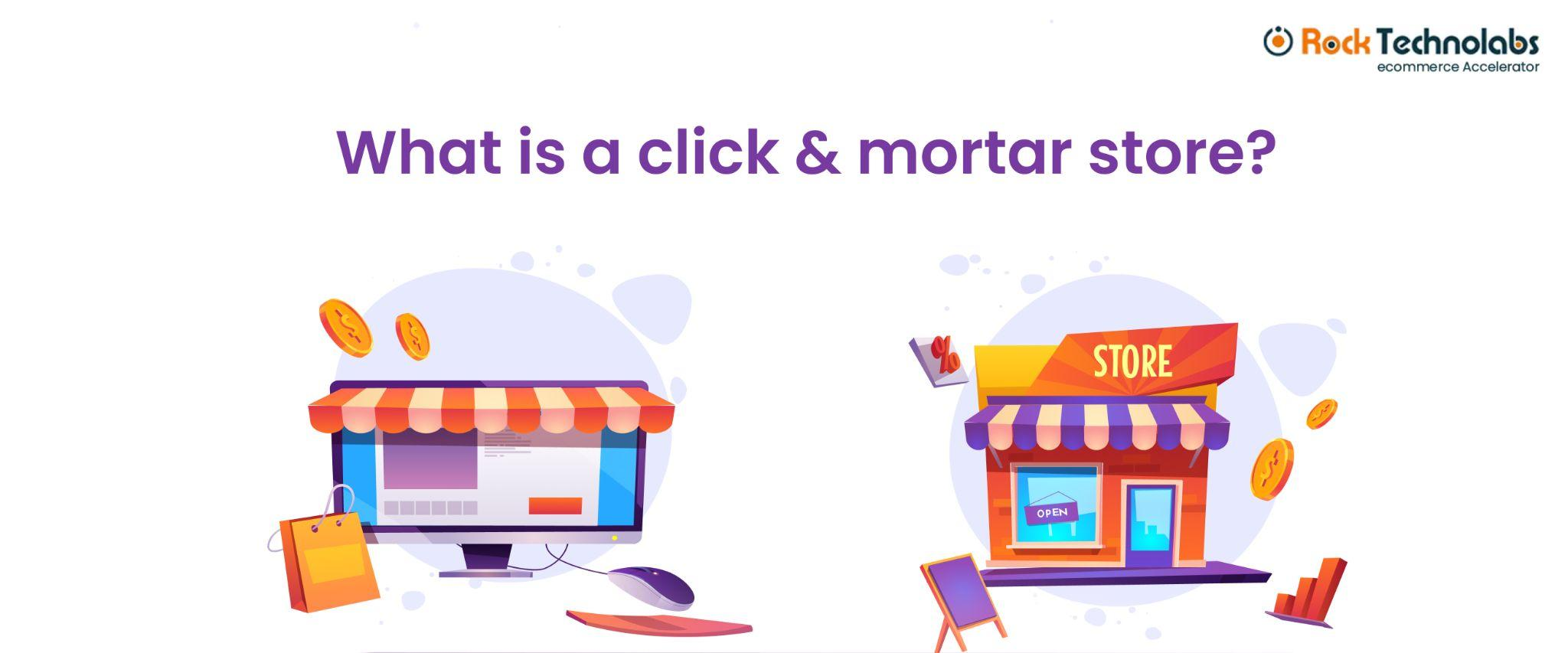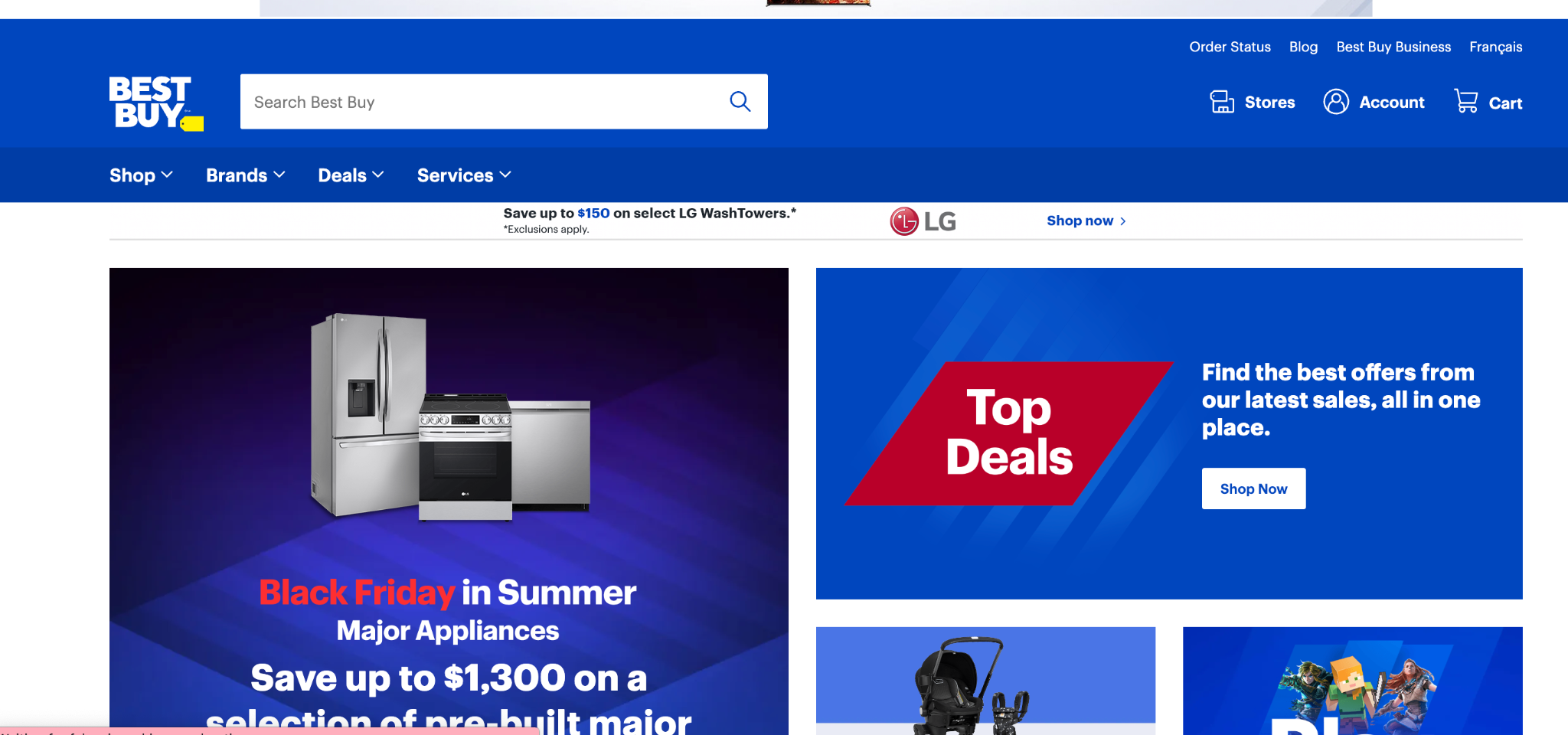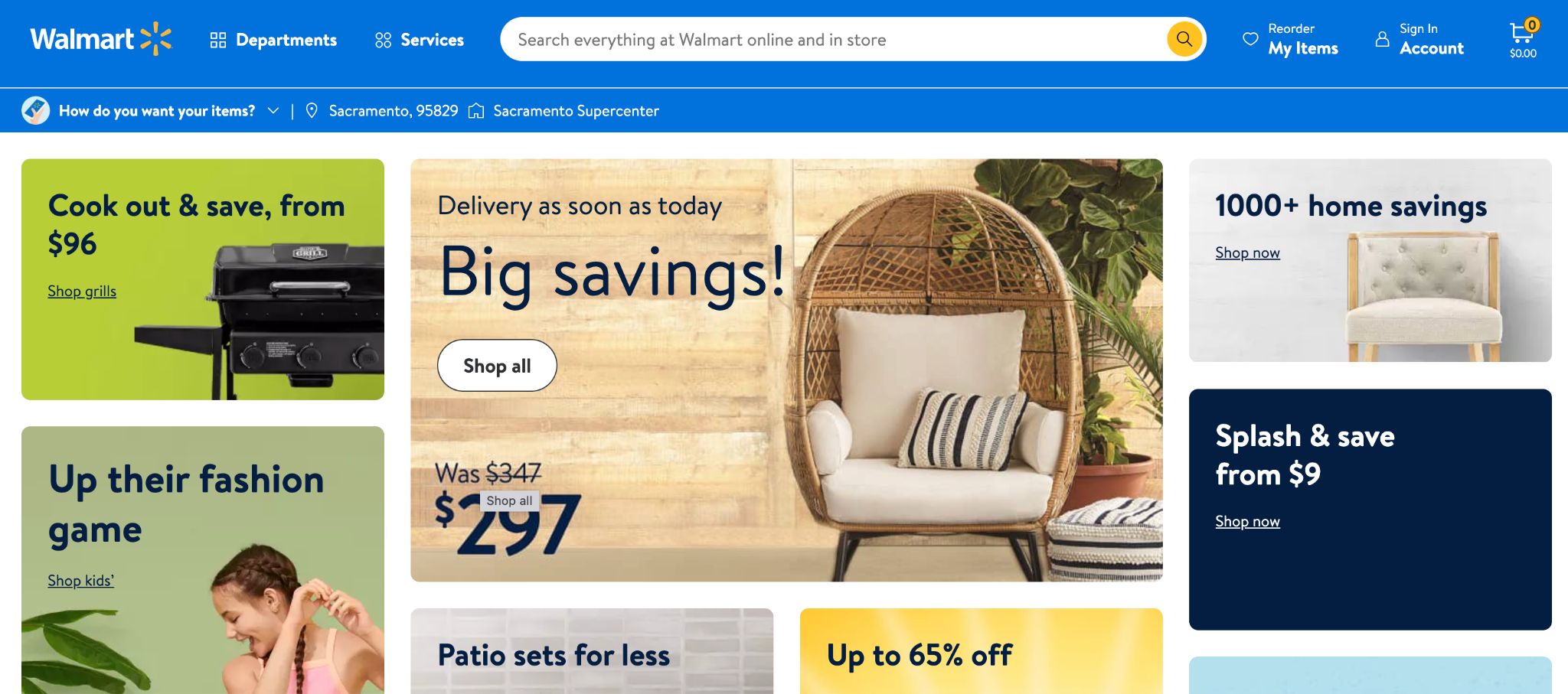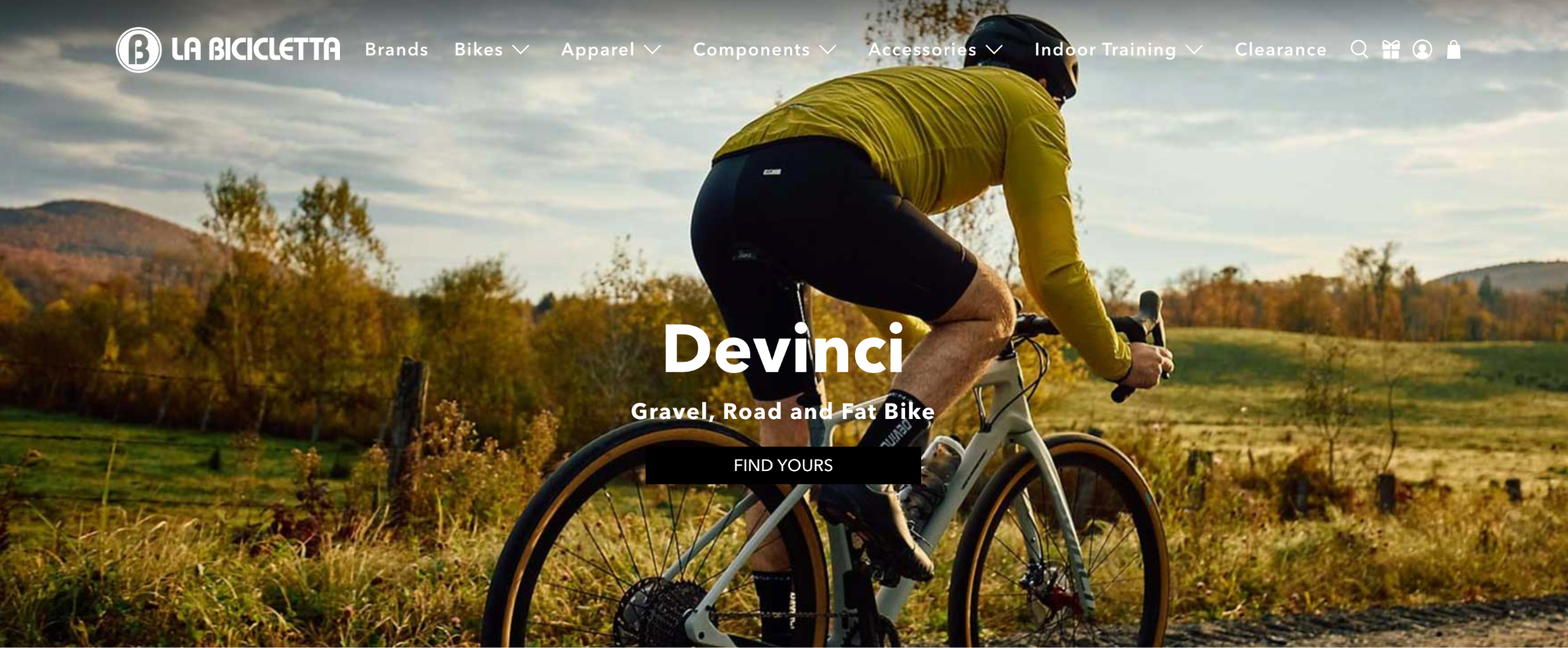Click and Mortar Store: Overview, Benefits, and Best Practices for Implementing Business Model

The world is going digital today, and several pure online players have emerged offering only click-based services. However, you should not neglect physical customers. This can lead to some loyal and potential customers. Is it possible to have both an online and physical store? Yes, this is where the click-and-mortar business model comes into the frame.
The concept of click-and-mortar store, sometimes called “click-to-bricks” or “omnichannel selling,” lets retailers cater to a broader audience through online and offline sales.
The article outlines how it works, its benefits, and a few examples of brands have made the most of a click and mortar store.
Click and Mortar Business Model: An Overview
As an omnichannel business model, click-and-mortar makes it possible for retailers to sell goods both online and offline. Typically, this includes a physical store and a website. Magento are mostly preferred for efficient online store.
Using this approach, businesses can offer more products and services to existing clients, which allows them to expand their client base.
With this success oriented business model, a wide range of consumers can access the product. Despite the popularity of e-commerce and high online traffic, it may be beneficial for businesses to have physical locations where clients may purchase in person.
Brick-and-click models are traditional ways for businesses to fulfil the needs of a diverse client base. In addition, a retail store can better understand its customers’ behavior through any website.
Click and Mortar Business Model: How Does It Work?
In today’s click-and-mortar world, online and offline business models are intertwined. When the customer shops online, they purchase an item, and the company delivers the item directly to the customer’s place. In contrast, brick-and-mortar stores allow customers to make purchases in-store.
Unlike brick-and-mortar stores, click-and-mortar stores work differently. This type of business involves selecting or purchasing a product online, then picking it up or delivering it to the customer at any retail business franchise. Implement the right ecommerce promotional ideas to add up to the growth of your online store.
Most companies following the click-and-mortar business model have mobile applications or websites where all their products are accessible. It entails ordering products online and then picking up the product from a physical store.
Click and mortar vs. brick-and-mortar: Key Differences
Click and mortar vs Brick and Mortar business model might look like a similar term, but both hold different meanings.
Brick and mortar business model entails conducting all the business via the physical store, whereas Click and Mortar allows you to conduct business through both the channels (online and offline).
Though both models have different meanings but hold the sole concept of conducting business and earning profits.
This, which calls for differences between brick-and-mortar vs click-and-mortar stores.
Here is the main difference between the two to make it easier for you to decide which model to choose:
| Click and Mortar | Brick and Mortar |
|---|---|
| Purchasing products online is a wonderful way to give the company’s customers the option of picking them up later from its retail stores. Alternatively, they can request that the company deliver the product to their place. | The company only allows customers to buy the product directly from that store. |
| With the Click and Mortar business model, payment can be made digitally, such as by bank transfer or credit card. | With this business model, you can pay using cash or a digital payment method, as well as using a combination of both. |
| Customers can have their products delivered straight to their homes. | Typically, brick-and-mortar stores do not offer home delivery as part of their services. |
How can Click and Mortar Businesses boost business sales?
Omnichannel selling is one of the main benefits of Click and Mortar. If you sell your products across multiple channels (both online and offline), you will have a wider audience, and shoppers will have more opportunities to discover and purchase your products.
The following are ways your business can enhance sales through the click-and-mortar model.
Expand your customer base
Whether customers shop online or in person, a click-and-mortar strategy can help you connect with them. In a study published by the Harvard Business Review, 73% of consumers made purchases using multiple channels.
An essential aspect of this model is the customer experience. A variety of online and in-store shopping options are available to customers.
There is no limit to how they can shop.
Using a click-and-mortar strategy, you can offer convenience to your customers while maintaining their desire for personal interactions. With Click and Mortar stores, you can give the flexibility to your customer to shop online as well as physical stores.
When it is about customer satisfaction, 58% of people are willing to pay more for a more convenient shopping experience.
Providing seamless customer service
Choosing a click-and-mortar store allows customers to select how they wish to receive their order. In some cases, face-to-face interaction is preferable, while in other cases, ordering online is the preferred method.
Moreover, customers can check out products in person before ordering them online or conduct research online before visiting your physical store. Regardless, it gives them the freedom to customize their experience.
Cost reductions
By integrating online retail strategies into your brick-and-mortar store, you can minimize the requirement for additional staff. This will result in a reduction in labor costs by automating several customer service functions.
Moreover, you save money on inventory with the click-and-mortar model. By integrating the drop-shipping model into your business, you can reduce the expense of your inventory storage. This is because your supplier manages stock levels and ships directly to your customers, thus resulting in decreasing overall costs.
Access to a broader market
Combine your e-commerce and retail strategies, so you can reach out to more customers, whether they are in-store or online. Give your customers the option of buying products online even after hours so that you can drive foot traffic to your brick-and-mortar store.
By offering more purchasing options, you can also cater to a broader range of buyer preferences. For your online eCommerce store, do not forget to implement eCommerce SEO best practices to get the wide coverage.
An improved after-sales service
Online shopping has changed the game, no matter where you are. It’s so easy and convenient to browse and buy stuff online.
You can relax at home and order anything with a few clicks. Moreover, you can pay for everything right on the internet.
With a click and mortar store, you can give your customers awesome service even after they’ve made their purchase, which is pretty sweet.
Savings in time
A click-and-mortar store saves customers time. Online buyers can purchase products and pick them up at their convenience later. By doing so, they will have the opportunity to inspect and pick up the product at their own pace physically.
Implementing a click-and-mortar business model
The question is, how do you implement a click-and-mortar business model? The following best practices will help you implement everything perfectly.
Embrace omnichannel marketing
Align your online and offline content and customer service delivery strategies with an omnichannel marketing strategy. For the organization to succeed, the company requires an omnichannel presence and marketing approach that will allow it to provide a seamless experience, from start to finish, consistent outstanding customer experience.
Here are some tips for creating an omnichannel marketing strategy:
- Identify the channels that your customers use most frequently
- Create content that’s relevant to the marketing channel.
Maintain a consistent inventory level
By maintaining consistency between your online and offline marketing channels, you can provide a seamless customer experience. Take the time to invest in a robust inventory management system to let your customers know what’s on hand.
Invest in a reliable point-of-sale
You can link your point-of-sale system to your online store to ensure smooth management of both your physical and online stores.
With a POS system that integrates essential parts of your click-and-mortar operations, you can provide B2B e-commerce products and services.
There are many things you can do with them, including managing inventory, processing payments, and managing teams.
Make shipping and returns easy
Shipping is a crucial part of your click and mortar business model. Having a reliable shipping and returns policy will make it easier for you to stay up to the client’s expectations.
The following tips will help you make shipping and returns as easy as possible for your customers:
- Be clear with your customers about shipping and returns policies from the beginning.
- Choose a reliable shipping and returns provider to simplify the process
Analyze your data
Combining your brick-and-mortar store with your Click and mortar store gives you a complete picture of how your business is doing. That’s why choosing an e-commerce platform that offers in-depth analytics is essential. With all the data at your fingertips, you can make informed decisions that drive your success.
In addition to measuring and monitoring your click-and-mortar sales and marketing efforts, your retailer promotions and storefront advertising can be tailored using your data and analytics.
Real-time examples of click-and-mortar business model
Several brands begin online before opening brick-and-mortar stores, while others believe that click-and-mortar is the best medium for their brand. Physical and digital storefronts are commonly offered by retailers right from the start. Here’s a look at some retailers that use click-and-mortar strategies to excel at omnichannel selling.
Allbirds

Founded in 2005, Allbirds sells eco-friendly footwear online and in brick-and-mortar stores. It opened its first brick-and-mortar store in 2014 after being found online. Direct-to-consumer is just another channel the brand uses.
As a result, Allbirds plans to close out 2021 with over 30 physical store locations in international markets. Taking an omnichannel sales approach has become more popular among e-commerce companies as customer acquisition costs continue to rise.
Best Buy

It’s a big chain that sells all kinds of electronics. They’ve been around for a while. One cool thing about them is that they’ve got both physical stores and an online store, so you can shop wherever you prefer.
Walmart

Among the biggest retail companies in the United States, Walmart follows the click-and-mortar model. In addition to purchasing items online, you can also pick them up later according to your convenience.
Bicicletta

In the 80s, Bicicletta was Vancouver’s premier cycling and triathlon shop. It has one of the largest selections of clothing and accessories in Canada, as well as a huge selection of road, mountain, and triathlon brands.
The omnichannel sales strategy is working for the brand. Getting in touch with its customer service is easy, and orders can be picked up in-store, collected, or delivered locally.
Amazon

E-commerce giant Amazon isn’t just revolutionizing online shopping, it’s also coming out with click-and-mortar stores, showing off its innovative retail approach. Through the combination of digital and physical shopping experiences, Amazon introduced its click-and-mortar concept, transforming consumer interaction with the brand. For example, Amazon Fresh is a prominent click-and-mortar concept.
Upon the integration of Whole Foods Market, Amazon continued to expand its click-and-mortar presence with the addition of Amazon Fresh. Together with the convenience of online shopping, they also offer physical stores for customers to visit. Amazon Fresh customers can order groceries online or via the Amazon Fresh app or website, and they can choose either home delivery or pickup at a Whole Foods store near them.
Conclusion
If your retail business wants to expand online and in-store, putting all your bets on click and mortar business is an ideal choice. Before you reach any conclusion, it is always better to consider the costs and time your target audience spends online and in-store.
With Click and Mortar stores, you do not have to be loaded up between managing your multiple stores to check stocks. Instead, you can manage everything at your fingertips, rather than running to every store to check for stocks.
With this business model, you can boost the customer experience, which will lead to increased sales. If you need any assistance with the e-commerce website, you can count on us, and we will assist in the best way possible.
FAQs about Click and Mortar:
What does click-and-mortar mean?
A click-and-mortar business refers to one that offers both online and brick-and-mortar services. Customers can shop both in-store and online at such businesses, as they have both physical stores and online presence.
How do brick-and-mortar and click-and-mortar differ?
Brick-and-mortar stores are those where customers can purchase products in person. Click-and-mortar combines brick-and-mortar shopping with online shopping, allowing customers to purchase in-store and online.
What are the crucial advantages of click and mortar stores?
Customers who browse in brick-and-mortar stores benefit from them. However, customers who don’t wish to wait for shipments benefit from having physical drop locations for products they order online.





